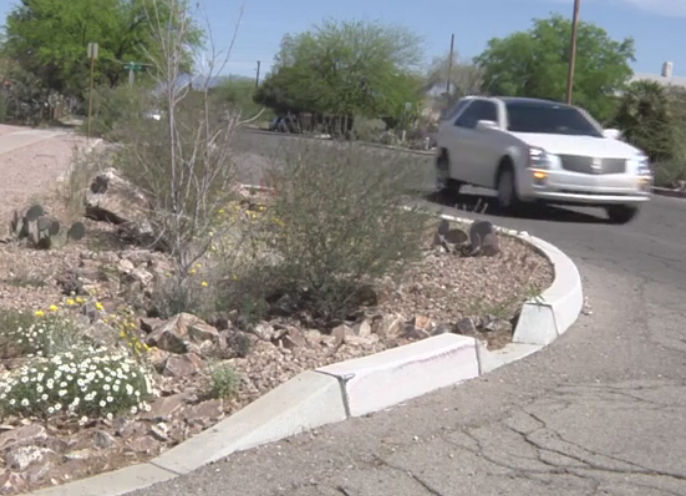The Green Streets policy requires that all new publicly-funded roadway development and re-development projects integrate infrastructure to capture the first half inch of rain, and that projects meet a 25% tree canopy cover and a 25% shrub and grass cover. Green infrastructure is now part of the design process for roads from the very beginning, promoting equity by extending tree canopy and its benefits to low-income communities. Additionally, Tucson has increased financial incentives for private parties implementing green infrastructure, specifically its rebate program for residential water harvesting.
The development of this policy was led by the Watershed Management Group, a nonprofit organization that provides green job training and green infrastructure resources and partners with city organizations such as the Department of Transportation and the Bike and Pedestrian Program to integrate green infrastructure into city projects.
Award Winning
Tucson gained two Emerald City points from the Natural Resources Defense Council for this policy. One was for its retention standard, requiring that stormwater-harvesting features be integrated into all publicly funded roadway development and redevelopment projects. City officials believe that this will reduce demand on precious potable water supplies for landscape irrigation, increase shade along roadways, enhance the urban forest, reduce flooding, and cut back on water pollution.
A second was awarded for the city’s increasing incentives for private party actions, specifically its rebate program for residential rainwater harvesting. The two-level funding system rebates the costs of qualifying rainwater harvesting systems to a maximum of $2,000. Levels of funding are based on the amount of water applicants aim to capture and the practices that are implemented. Households that install a permanent gray water irrigation system can also apply for Tucson Water’s Single Family Residential Gray Water Rebate Program for reimbursements up to $1,000.

Grassroots Innovation
The adoption of this innovative policy is also a lesson in the power of grassroots movement building. In the decade leading up to the policy, community partners worked with the Department of Transportation to ensure the policies they pushed for were in line with the agency’s needs and educating the public to create demand for green infrastructure. Building these partnerships and educating the public created an environment where the policy passed easily. Further, it promotes equality by extending tree canopies to underserved communities and reducing the heat island effects there, while providing accessible employment opportunities.
Together, local community groups, residents and Tucson’s Department of Transportation have found a way to make their city streets cooler and greener.Tucson Shows How Green Infrastructure Can Create Community Resilience
Funding
- Rate hikes and voluntary payments (first implemented during the Great Recession) fund improvements and provide grants to community groups for environmental enhancements
- Trees For You enables the public to purchase shade trees at wholesale prices and is funded through an energy efficiency portfolio and a partnership with a local nursery
Partners
- Tucson Department of Transportation
- Watershed Management Group
- Water Resources Research Center at the University of Arizona: Conserve to Enhance Program
- Tucson Clean & Beautiful
Lessons Learned
- Laying the groundwork with the Department of Transportation and working with the public to create a demand for green infrastructure can lead to successful policy adoption for green infrastructure.
- Providing robust rebates to landowners for rainwater harvesting and gray water reuse encourages residents to get involved.

